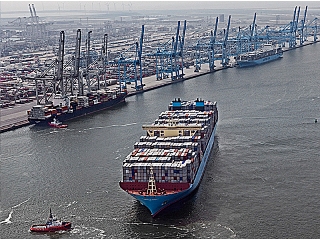 A.P. Moller-Maersk said it delivered a profit of US$2.3 billion in the second quarter of 2014, up 169 percent from $856 million in the same quarter of the preceding year.
A.P. Moller-Maersk said it delivered a profit of US$2.3 billion in the second quarter of 2014, up 169 percent from $856 million in the same quarter of the preceding year.
“The group achieved a very satisfactory result for first half of 2014 with underlying profit increasing 42 percent to US$2.4 billion, mainly driven by Maersk Line, APM Terminals and Maersk Oil,” said group CEO Nils S. Andersen.
Overall revenue increased by 2.3 percent, in part impacted by higher container volumes and higher oil entitlement production at a higher average oil price that were partly offset by lower average container freight rates.
Maersk Line made a profit of $547 million in the second quarter from $439 million the preceding-year period. The improvements, despite 2.7 percent lower total revenue per 40-foot-equivalent unit (FFE), were achieved through 4.4 percent lower unit costs supported by higher bunker efficiency and a volume increase of 6.6 percent to 2.396 million FFEs.
“Maersk Line continues to pursue improved competitiveness through cost leadership and commercial excellence initiatives. Most significant is Maersk Line’s initiative to enter into a 10-year vessel sharing agreement with the world’s second largest carrier in order to improve network efficiencies combined with increased port coverage and service frequency on all East-West trades,” a company release said.
The container shipping line has revised its expected 2014 result from “being above” 2013’s $1.5 billion to “being significantly above” the 2013 result following a strong financial performance in the first half of 2014, as it predicts global demand to grow by 4 percent to 5 percent.
On the group’s outlook for the year, Andersen said: “With the good progress in delivering on our group priorities and the solid financial performance across the group, which has been achieved in challenging markets, we upgrade the outlook for the group result to be around USD4.5 billion for 2014.”
He added, however, that the outlook is “subject to considerable uncertainty, not least due to developments in the global economy, the container rates and the oil price.”




